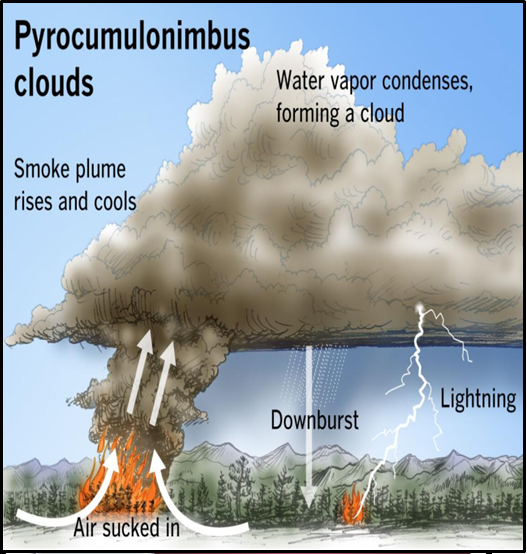INCREASED WILDFIRES FUEL MORE PYROCUMULONIMBUS CLOUD FORMATION
Why in the news?
Intense wildfires in the U.S. and Canada are generating more pyrocumulonimbus clouds, which can spark new fires and create thunderstorms, with their frequency increasing due to climate change.
source:wikimedia
Aboutv Pyrocumulonimbus Clouds Formation:
- Occurrence: Created by intense wildfires or volcanic eruptions. Not all wildfires produce these clouds.
- Process: Extreme heat from fires warms surrounding air, which rises and cools, forming a pyrocumulus cloud. If conditions persist, these clouds evolve into pyrocumulonimbus clouds.
- Characteristics: Can reach up to 50,000 feet and generate thunderstorms but produce little rain.
Recent Trends:
- Increased Frequency: Pyrocumulonimbus clouds have become more common. In 2023, 140 were recorded in Canada alone, compared to an average of 102 globally before 2023.
- Previous Data: Prior to 2023, about 50 pyrocumulonimbus clouds per year were observed in Canada.
Climate Change Impact:
- Role of Climate Change: Rising global temperatures and more intense wildfires may be contributing to the increased occurrence of these clouds.
- Scientific Insights: More frequent fires create more opportunities for pyrocumulonimbus clouds, with atmospheric conditions playing a key role.
About Pyrocumulonimbus Thunderstorms:
Smoke Plume:
Plume Cools:
Clouds:
Downpour:
Thunderstorm & Lightning:
Fire-Making Thunderstorms and Firestorms:
|




